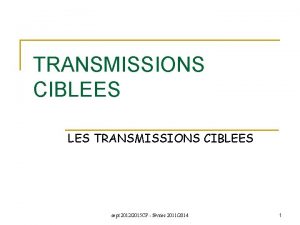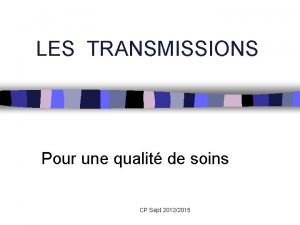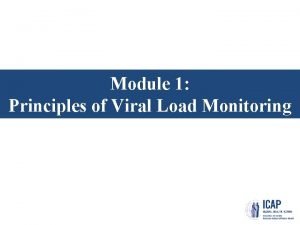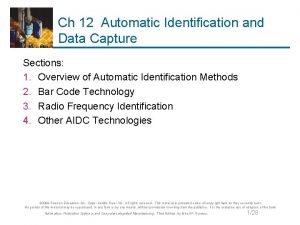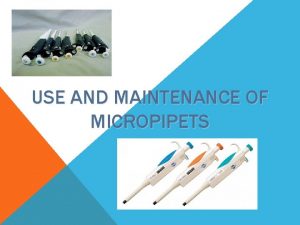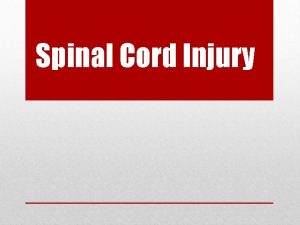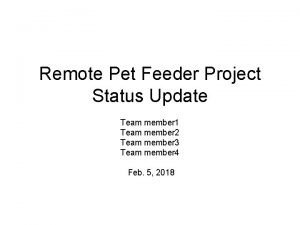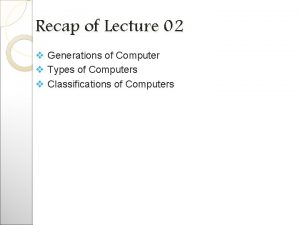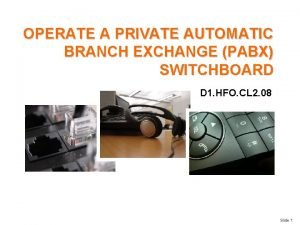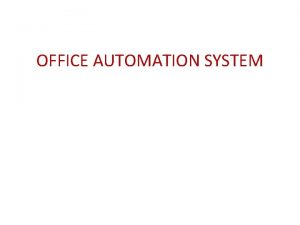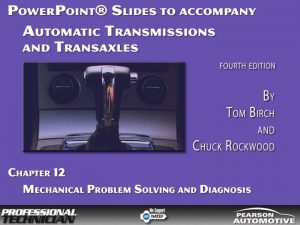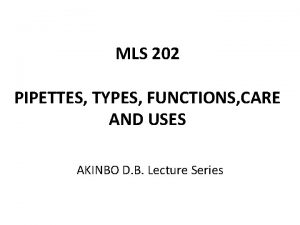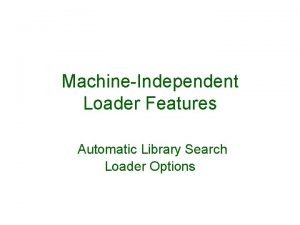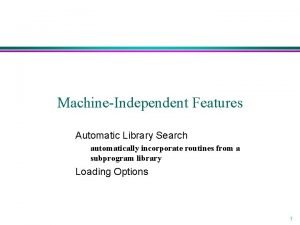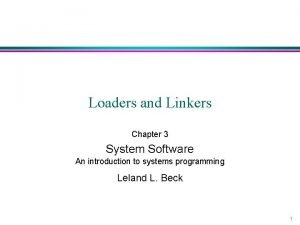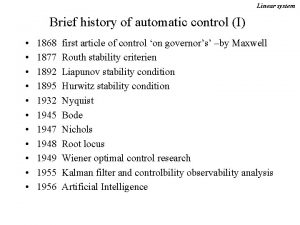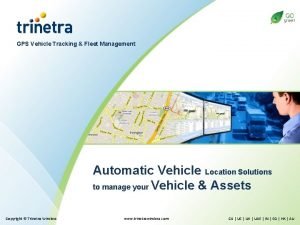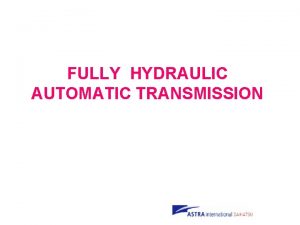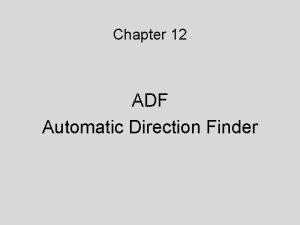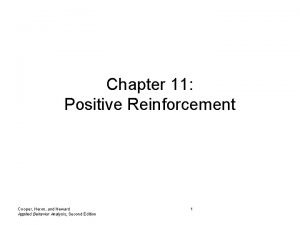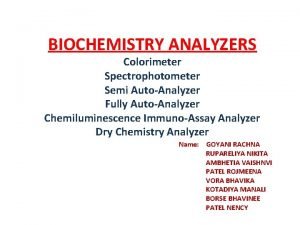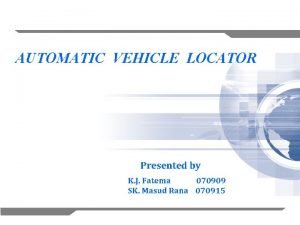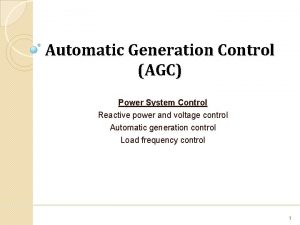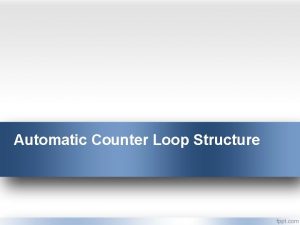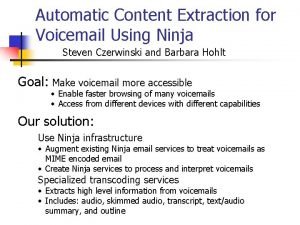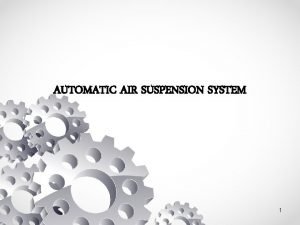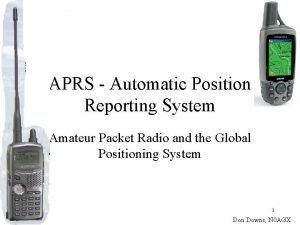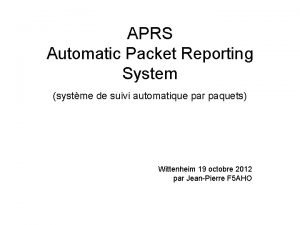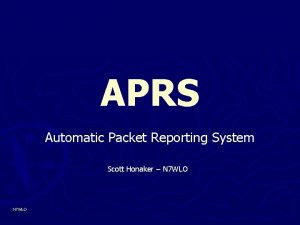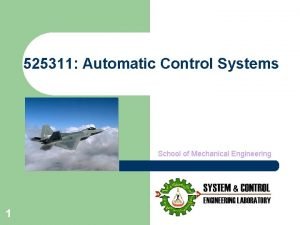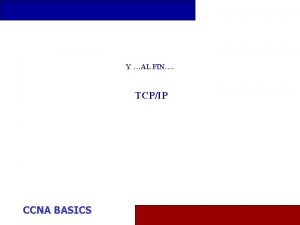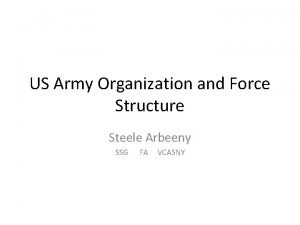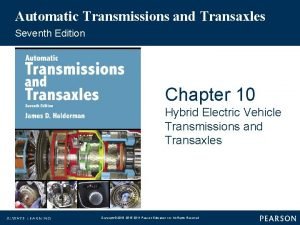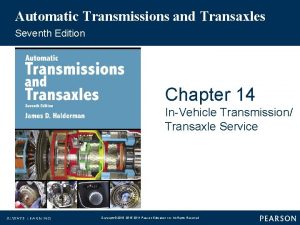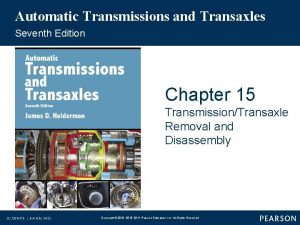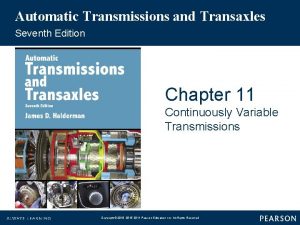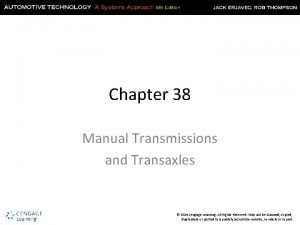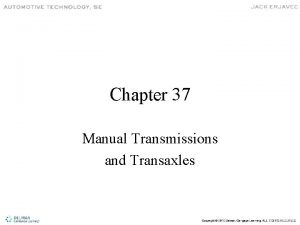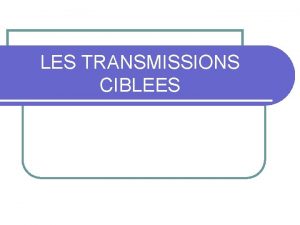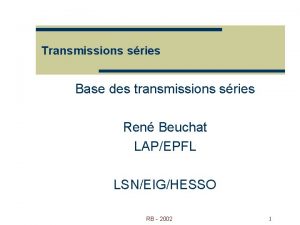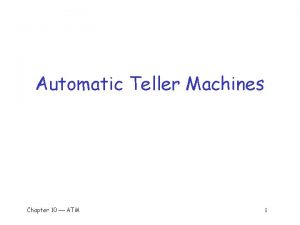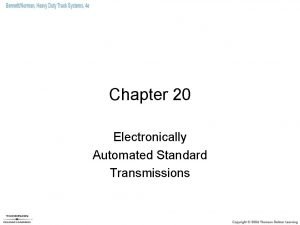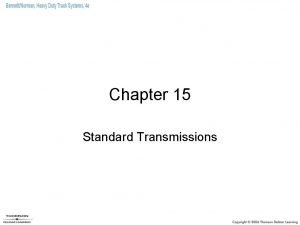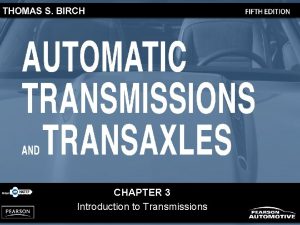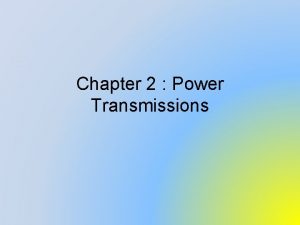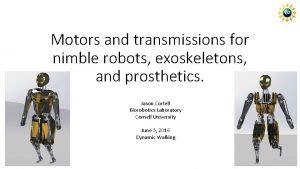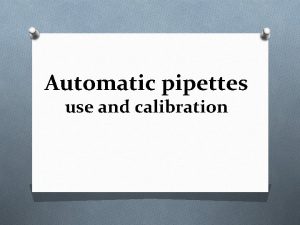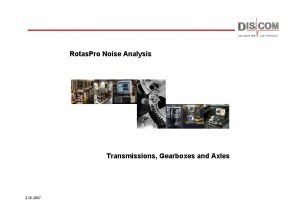Chapter 40 Automatic Transmissions and Transaxles Automatic Transmissions













































- Slides: 45

Chapter 40 Automatic Transmissions and Transaxles

Automatic Transmissions and Transaxles • Selects gear ratios according to engine speed, power train load, vehicle speed, and other operating factors. • Most have four speeds with an overdrive fourth gear. • Many have five, six, and up to eight speeds.

Torque Converter • A fluid clutch or coupling that transfers torque from the engine to the transmission. • Automatically engages and disengages power from the engine in relation to RPM. • At idle, there is not enough fluid flow for power transfer. • As RPM increases, fluid flow is sufficient to transmit engine power.

Torque Converter Internal Parts

Torque Converter Components • Impeller or Pump Assembly – Receives power from the engine. • Turbine – Transfers power to the transmission main shaft. • Stator – Is the torque multiplier. • Overrunning clutch – Allows the stator to turn in only one direction.

Basic Operation • Transmission fluid is the medium to transfer energy. • The faster the impeller rotates, the greater energy the fluid has to transfer. • The fluid leaving the impeller acts on the turbine. • The turbine drives the transmission input shaft.


Types of Oil Flow • Rotary Flow – Oil flow around the circumference caused by rotation of the torque converter on its axis • Vortex Flow – Oil flow from the impeller to the turbine and back to the impeller • Coupling point is when turbine speed approaches impeller speed


Overrunning Clutch • Keeps the stator from rotating when driven in one direction. • The stator is locked when there is a difference between the turbine and impeller speeds.

Lockup Torque Converter • Eliminates the 10% slip between the impeller and turbine. • Improves fuel economy. • Reduces operational temperature. • Most torque converter clutches (TCC) use electronically controlled hydrualic pistons.

Planetary Gearset

Planetary Gear Operation • When the planetary carrier is the input, an overdrive condition is produced. • When the planetary carrier is the output, an underdrive condition is produced. • When the planet carrier is held, reverse gear is produced.

Types of Compound Gearsets • Simpson – Has two separate planetary gearsets with a common sun gear. • Ravigneaux – Has two separate sun gears, two separate planetary gears, and a common ring gear.

Simpson Gearset

Ravigneaux Gearset

Other Transmission Designs • Nonplanetary Gearset Type – Uses constant mesh gears similar to a manual transmission. • Continuously Variable Type (CVT) – Has no fixed forward speeds. – Uses belts and pulleys to provide variable ratios.

CVT Transmission

Lepelletier System • Used in late model 6 -, 7 -, and 8 -speed transmissions. • Combines a simple gear set with a Ravigneaux gear set. • Many are more compact than most four- and five-speed automatics.

Apply Devices • Bands – Are typically used as a holding device. • Servos – Are used to apply the band. • Multiple Friction Disc Assemblies – Are used to hold or apply.

Transmission Bands • A braking assembly positioned around a stationary or rotating drum or carrier.

Typical Simple Servo

Transmission Clutches • Able to hold and drive planetary gear members. • Overrunning clutches are used to hold or drive members of the gearset. • Both sprag and roller overrunning clutches are used.


Multiple-Disc Clutches • A series of friction discs and steel plates used to transmit torque or apply braking force. • Internal teeth mesh with clutch hub. • External teeth mesh with internal splines in transmission housing or clutch drum.


Bearings, Bushings, and Thrust Washers • Bearings are used to reduce wear and friction: – Most either slide or roll against the surface • Bushings are pressed into place: – Support rotating parts, guide parts, and control fluid flow • Thrust washers may act as a bearing and a spacer to control endplay.

Typical Bearing Locations

Bushing Locations

Snap Rings • Both internal and external types are used. • Internal snap rings hold servo and clutch assemblies together. • May also be used to adjust clearances.

Gaskets and Seals • Gaskets – Seal two parts together or prevent fluid flow – Classified as either hard or soft gaskets • Seals – Used to seal fluid around valves, shafts, and other moving parts

Seal Classifications • Static – Is used between two parts that do not move. • Dynamic – Is used between two parts that move with either rotating or reciprocating motion. • Positive – Prevents all fluid leakage. • Non-positive – Allows a controlled amount of leakage. – Is used to lubricate a moving part.

Final Drive Assemblies • Transmit transaxle output to the differential section. • Four common configurations: – Helical gear – Planetary gear – Hypoid gear – Chain drive

Hydraulic System • The fluid operates, lubricates, and cools the transmission. • The pump is the source of all fluid flow: – Pressure-regulating valves change fluid pressure to control shift quality and shift points – Flow-directing valves send to fluid to the correct apply device for gear changes

Valve Body • Distributes and controls pressurized fluid throughout the transmission. • Made of two or three main components: – Valve body – Separator plate – Transfer plate


• Check ball valves • Poppet valves • Spool valves

Shift Quality • Shift feel is controlled by the pressure at which each hydraulic member is applied or released. • Timing between band clutch application to prevent engine flare-up or clutch and band slippage.

Shift Timing • Determined by throttle pressure and governor pressure acting on opposite sides of the shift valve.

Hydraulic Circuits • The hydraulic circuit for each gear selector position is explained in the flow charts. • While examining flow charts, note gear range, torque converter mode, engaged planetary controls, approximate vehicle speed, and throttle position.





 Cible et macrocible
Cible et macrocible Les transmissions écrites et orales
Les transmissions écrites et orales Hiv transmissions
Hiv transmissions Automatic input device
Automatic input device Automatic data capture methods
Automatic data capture methods Maintenance de pipettes
Maintenance de pipettes Vsts octopus deploy
Vsts octopus deploy Automatic bladder vs autonomic bladder
Automatic bladder vs autonomic bladder Automatic pet feeder project report
Automatic pet feeder project report Automatic input devices
Automatic input devices Randoop automatic test
Randoop automatic test Contrived free operant observation
Contrived free operant observation Private automatic branch exchange
Private automatic branch exchange Function of office automation system
Function of office automation system Automatic transmission troubleshooting chart
Automatic transmission troubleshooting chart Functions of pipette
Functions of pipette Loader design options
Loader design options Automatic library search
Automatic library search Estab in system software
Estab in system software History of automatic control
History of automatic control Chunking ap psychology definition
Chunking ap psychology definition Automatic fleet management
Automatic fleet management Komponen utama automatic transmission
Komponen utama automatic transmission Automatic portrait segmentation for image stylization
Automatic portrait segmentation for image stylization Examples of thoughts
Examples of thoughts Automatic thought record
Automatic thought record Automatic direction finder
Automatic direction finder Multiple stimuli with replacement
Multiple stimuli with replacement Principle of biochemistry analyzer
Principle of biochemistry analyzer Automatic wrappers for large scale web extraction
Automatic wrappers for large scale web extraction Automatic vehicle locator system
Automatic vehicle locator system Automatic positive airway pressure
Automatic positive airway pressure Automatic generation control block diagram
Automatic generation control block diagram Automatic data capture methods
Automatic data capture methods Counter controlled loop flowchart
Counter controlled loop flowchart Automatic control
Automatic control Automatic content extraction
Automatic content extraction Automatic air suspension system
Automatic air suspension system Automatic position reporting system
Automatic position reporting system Automatic packet reporting system
Automatic packet reporting system Aprspoint
Aprspoint Mechanical control systems
Mechanical control systems Ccna
Ccna Awrsqrpt.sql
Awrsqrpt.sql Us army battalion organization chart
Us army battalion organization chart Man ray
Man ray
